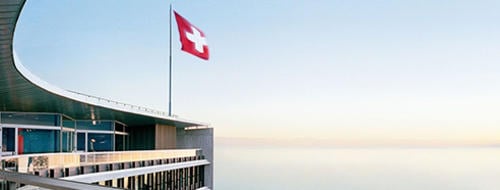Creating shared value

Drawing on our purpose – to unlock the power of food to enhance quality of life for everyone, today and for generations to come – we focus our energy and resources on making a positive impact at scale.
We regularly conduct a materiality assessment to identify where Nestlé has the greatest impact on society and the environment, and the topics most important to our business success. In this section, we provide a summary of the top-rated themes from our latest assessment. Our Creating Shared Value and Sustainability Report (pdf, 19Mb) provides more details, including how we are aligning with the Task Force on Climate-related Financial Disclosures recommendations.
As a company that stands for Good food, Good life, Nestlé is stepping up its measures to help people enjoy a balanced diet.
We are providing complete transparency on the nutritional value of our portfolio. Products with a Health Star Rating (HSR) of 3.5 stars or more - together with specialized nutrition products, such as baby foods, vitamin and mineral supplements, and medical nutrition - are considered nutritious. Together, these products accounted for close to 38% of our food and beverage sales in 2023. Our pet care portfolio is excluded from this assessment.
Looking at people's diets holistically, we know that people consume food and beverages not only for nutrition but also for enjoyment. Nestlé aims to offer the right products for all these occasions, while also guiding people towards a more balanced diet. We are strengthening our responsible marketing practices, with new rules restricting the marketing to children under the age of 16 years in effect as of July 2023. We are ensuring that all children's confectionery and ice cream portions will be 110 kilocalories or less and that all multi-serve products from these two categories have clear front-of-pack portion guidance. And to help people enjoy our products as part of a balanced diet, we will provide more guidance, including recipes, menu planning, healthy lifestyle tips and recommendations for nutritious choices.
High standards of food safety and quality are non-negotiable at Nestlé and are fundamental in our engagement with consumers. Quality is integral to our Corporate Business Principles and embedded in our purpose and values. The end-to-end approach we take to food safety and quality applies to design, delivery and consumption. We apply international standards and help raise the bar in our industry using rigorous processes and leading scientific techniques.
We update our food safety and quality systems to respond to considerations, such as tightening regulations, changes to suppliers or ingredients, introduction of regenerative agriculture practices, new packaging and geopolitical developments. In 2023, our Quality Assurance Centers performed more than 4.1 million analytical tests for quality and food safety risk assessment and management.
We are more than halfway to our 2025 goal to reduce absolute GHG emissions included in our Net Zero Roadmap and are progressing well. Most of the reductions are due to changes in the way we source raw materials, such as investments in deforestation prevention and regenerative agriculture in our agricultural supply chains.
We have identified more than 80% of the supply chain initiatives needed to hit the 2025 target and are seeking further reductions to reach our planned 50% cut by 2030. For example, through the newly inaugurated Nestlé Institute of Agricultural Sciences, our experts are exploring novel approaches in dairy farming that have the potential to reduce GHG emissions in the areas of cow feed and manure management.
Helping prevent deforestation plays a major role. By the end of 2023, 93.4% of our primary supply chains for cocoa, coffee, meat, palm oil, pulp and paper, soy and sugar were assessed as deforestation-free. The slight decrease from 99.1% in 2022 is due to the inclusion of coffee and cocoa in this indicator for the first time, where deforestation risk has not been assessed for as long. We continued to maintain or improve assessed deforestation-free status for the other stated raw materials.
As of 2023, Nestlé has approved near- and long-term science-based emissions reduction targets with the Science Based Targets initiative (SBTi). The SBTi has validated Nestlé’s net-zero science-based target by 2050.
We continue making progress in sourcing ingredients under the Nestlé Raw Material Transition Framework, which ensures our raw materials are traceable to point of origin and are farmed using methods aligned to our Responsible Sourcing Standard, while progressively delivering benefits to people, nature and climate. We have set requirements for 14 priority raw materials: cereals and grains; cocoa; coconut; coffee; dairy; fish and seafood; hazelnuts; meat, poultry and eggs; palm oil; pulp and paper; soy; spices; sugar; and vegetables. Our aim is for 100% of these materials to be responsibly sourced by end of 2030. In 2023, this figure reached 36.2%.
Reforestation within or near our sourcing locations is an essential part of decarbonizing our operations and supply chain. Nestlé became the first food and beverage company to pilot Airbus's new Pléiades Neo satellites. We are using high-resolution images to monitor trees planted in our sourcing regions to ensure they thrive in the long term.
We continue to expand our regenerative agriculture program across a wider range of raw materials and regions, supporting farmers with training. Our farmer relationship management system collects data for over 250 000 farms, helping us track progress on GHG emission reductions and regenerative agriculture practices.
Regeneration is important for water resources as well. Over 40 water regeneration projects are now underway around our water bottling sites. Each one is tailored to local challenges and based on a mix of natural and technical solutions for improving the quality and quantity of water available.
Our vision remains that none of Nestlé's packaging ends up in landfill or as litter. Our strategy addresses both product design and infrastructure systems for reuse and recycling. By reducing unnecessary packaging, designing better packaging, modeling fair collection systems and supporting good regulation, we aim to support the transition to a waste-free future.
Packaging innovations in 2023 support this transition. Redesigned jars for Malher Bouillon are saving 156 tonnes of plastic annually, with a format that is easy to recycle in local systems in India. In Latin America, Nescafé reduced single-serve sticks packaging, saving 44 tonnes of plastic annually.
Innovations to reach this goal go beyond packaging redesign. In Indonesia, we collaborated with a team of start-ups and retail partners to pilot a reusable and refillable dispenser, and single-serve reusable packaging, for Milo and Koko Krunch brands. Shipping innovations also help. Reusable shipping boxes and reusable pallet bands that replace plastic shrink wrap are cutting plastic use by 100 tonnes annually in China.
We are working with partners on packaging solutions, including a pilot of reusable stainless-steel packaging for Nesquik in over 60 German grocery stores.
Looking at the whole landscape
The farms in our supply chains are not isolated – they are part of broader landscapes and economies. Only by joining forces with other stakeholders can we address complex issues, such as deforestation, while advancing regenerative agriculture practices.
Nestlé has been partnering with others through landscape initiatives that address these issues. Since 2020, a partnership with the Ministry of Water and Forests in Côte d'Ivoire and the Earthworm Foundation has led to a significant reduction in deforestation, as well as the reforestation of almost 1500 hectares in the Cavally Forest Reserve. In 2023, the Cavally project entered a new phase with additional partners to achieve greater impact.
15 landscape initiatives supported in 2023
Working at a landscape level can offer various benefits for biodiversity, water stewardship, climate change, human rights and resilient livelihoods.
To help scale landscape initiatives, Nestlé supports Landscape Enterprise Networks (LENs) in the UK and Europe. LENs brings together organizations that need nature-based solutions with the farmers who can provide them. In the East of England, Purina and Nestlé Cereal Partners UK are working with water companies and local authorities to fund the introduction of nature-based solutions. Over 60 farmers and land managers will implement these solutions across more than 10 000 hectares of land.
In 2023, we also supported sustainable landscape initiatives in Brazil, Chile and Malaysia. We are also active in numerous landscape initiatives developed by our palm oil suppliers and partners in different parts of Indonesia.
In the UK, Purina Go-Cat cat food and Nestlé Original Shredded Wheat cereal contain ingredients sourced from farmers involved with the LENs program.
Explore more of our Annual Report
Downloads
The Annual Report contains our Annual Review including Creating Shared Value highlights, the Corporate Governance & Compensation Reports and our Financial Statements













